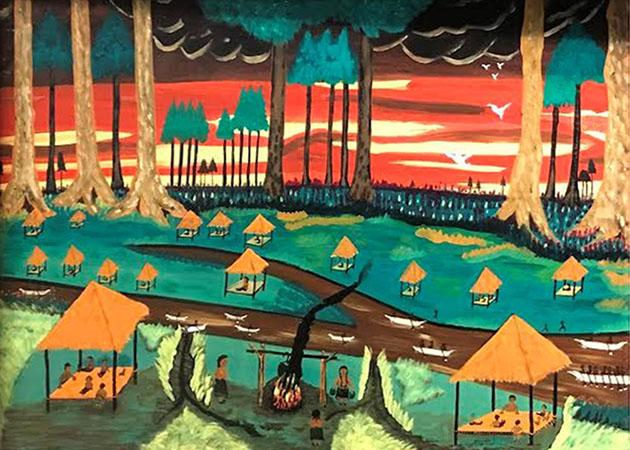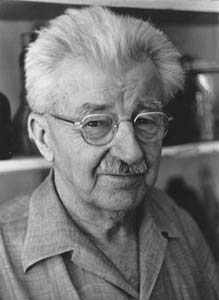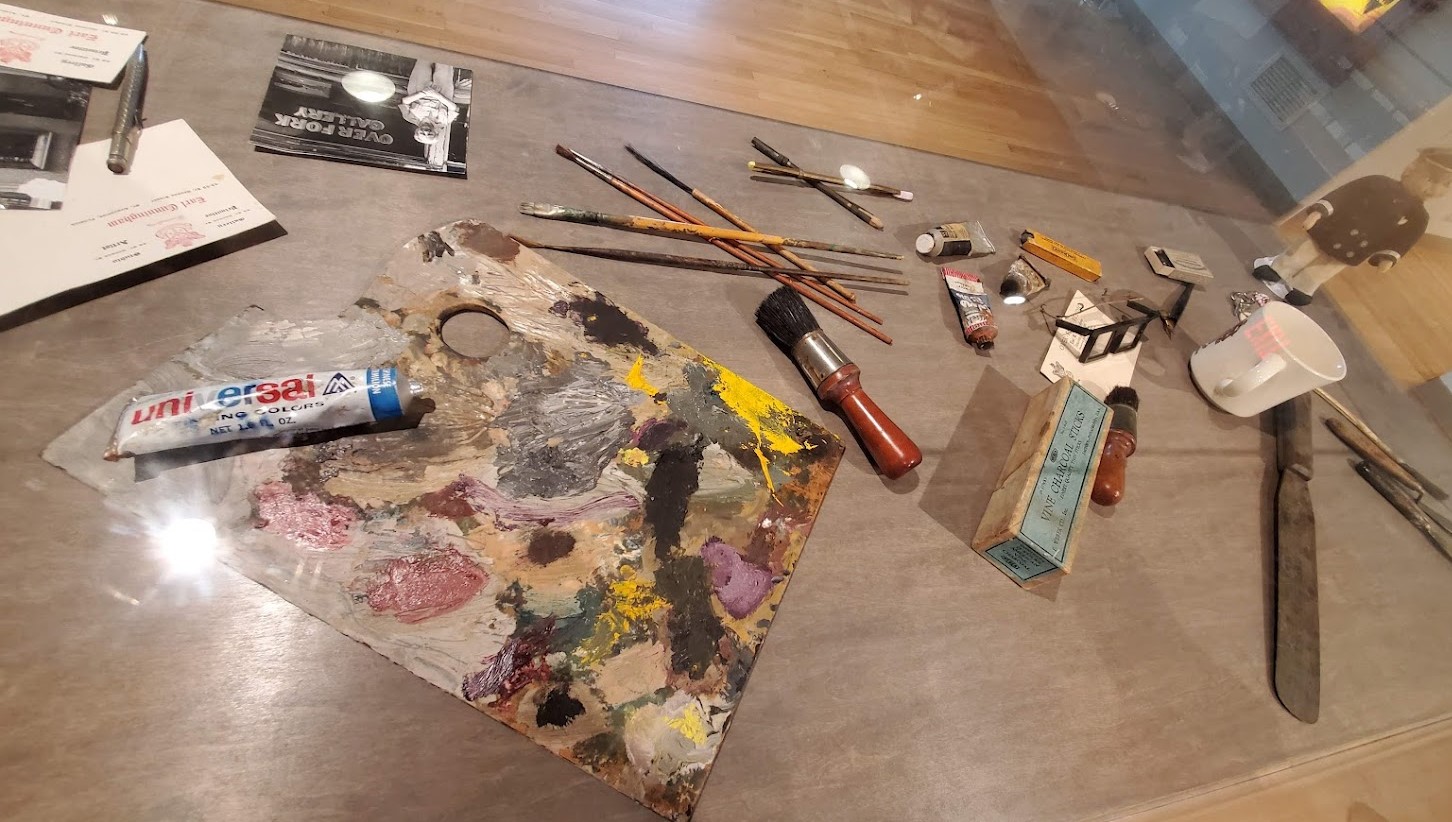On a recent visit to the Mennello Museum of American Art in Orlando, we discovered that the Mennello holds the largest collection of paintings by self-taught folk artist Earl Cunningham (1893-1977).
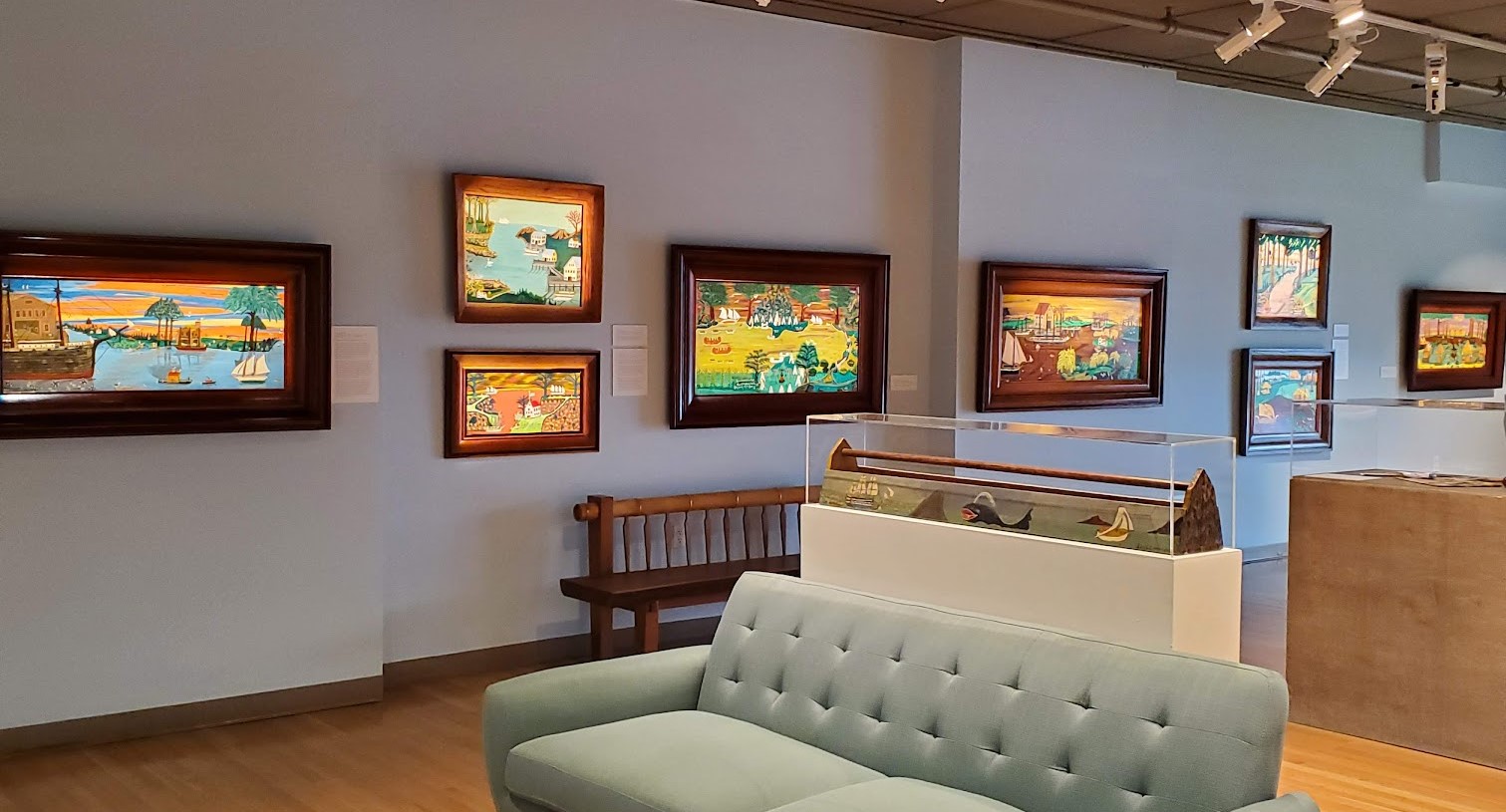
Installation view, Earl Cunningham gallery
We hear a lot about self-taught folk artists these days, with Bill Traynor, Horace Pippin, Felipe Benito Archuleta, Howard Finster and Mary F. Whitfield –and of course Edward Hicks and Grandma Moses — being among the names of “outsider artists” that we recognize.
Although Earl Cunningham is considered one of the premier folk artists in American art history, we weren’t familiar with his work – despite the fact that in 2007 the Smithsonian American Art Museum put together a national tour of a solo exhibition of his work, and many major museums hold his work in their collections — including The Metropolitan Museum, the Museum of American Folk Art, the Smithsonian American Art Museum, and the Abby Aldrich Rockefeller Folk Art Center in Williamsburg, Virginia. In 1961 Cunningham sent a painting titled The Everglades to Jacqueline Kennedy that hung in the White House and is now on display at John F. Kennedy Library and Museum in Boston.

Florida Everglades. John F. Kennedy Presidential Library & Museum
Earl Cunningham was born in Edgecomb, Maine, near Boothbay Harbor. He was a loner from an early age, and all his life he was attracted to the sea. He left home at age 13, supporting himself as a peddler and tinker, traveling from place to place, selling and mending metal utensils. By his late teens he was painting and selling pictures of boats and landscapes. He became a seaman and traveled the East coast of the United States in large ships carrying goods to eastern ports.
“If Picasso can do anything he wants, so can I.”
Earl Cunningham
In 1949, Cunningham settled in St. Augustine, Florida, and opened a curio shop called “The Over-Fork Gallery” where he sold antiques, bottles, china and tools. He displayed his paintings in one store window and kept scores of others in a back room where a sign read, “These paintings are not for sale.” Cunningham believed his works should be kept together, to eventually be housed in a museum devoted to his art. “Every one of my paintings are brothers and sisters,” he said. “I can’t separate my family of paintings.”
A withdrawn, eccentric and cantankerous man, he experienced bouts of depression and paranoia, and worried about harassment by neighborhood youths, fearful that arsonists would target his gallery. He was known as the “Dragon of St George Street.” He died by his own hand in 1977.
Fantastic, a weird fusion of traditional folk art and pop culture. [Cunningham’s] world is not only fabulously Technicolored […] It also teems with bright, often closely observed flora and fauna … all rendered in unexpected textures and often ingenious brushwork.”
R. Smith, New York Times, February 17, 1995
He painted genre scenes, primarily landscapes of the places he’d seen, from Nova Scotia down the Eastern seaboard to Florida. His views of the Atlantic coast and its intercoastal ecosystem are populated with dock workers, fishermen, farmers, wildlife and even American Indian tribes. He is known to have painted more than 400 landscapes, most depicting his vision of an ideal, unspoiled past, where life was simple and elements of modern life were absent.
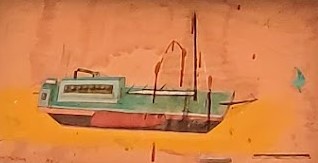
Sketch for Houseboat on Big Cypress Swamp, c.1945 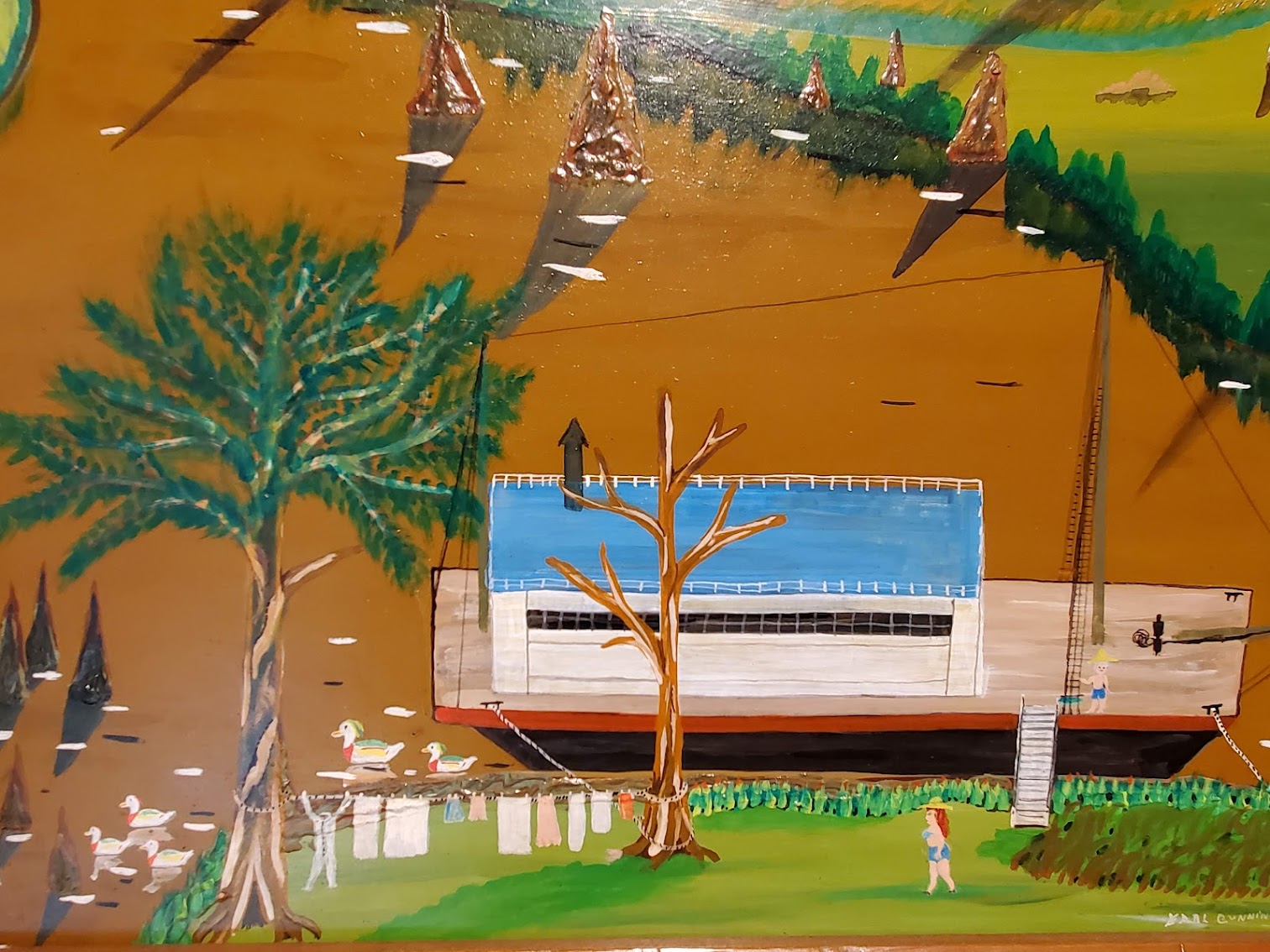
Houseboat on Big Cypress Swamp, c.1945
Earl Cunningham combined fact, fantasy and his own life experiences in vibrant paintings teeming with narrative activity. His view of the world was unique, and his naïve style and vivid colors have labeled him both an “American Primitive Fauve” and a “folk modernist”. Although he was entirely self-taught, Cunningham actually developed a sophisticated understanding of color, light and atmosphere. Preliminary drawings usually preceded carefully planned paintings, which were mostly oil on Masonite, a surface that enhanced their brilliance and highlighted details. In fact, when we first entered the gallery, our initial reaction was that the images were backlit, painted on glass!
He painted with artist paints as well as commercial house paints. He was known to purchase cans of paint from yard sales and to have as many as 20 to 30 cans in his studio.
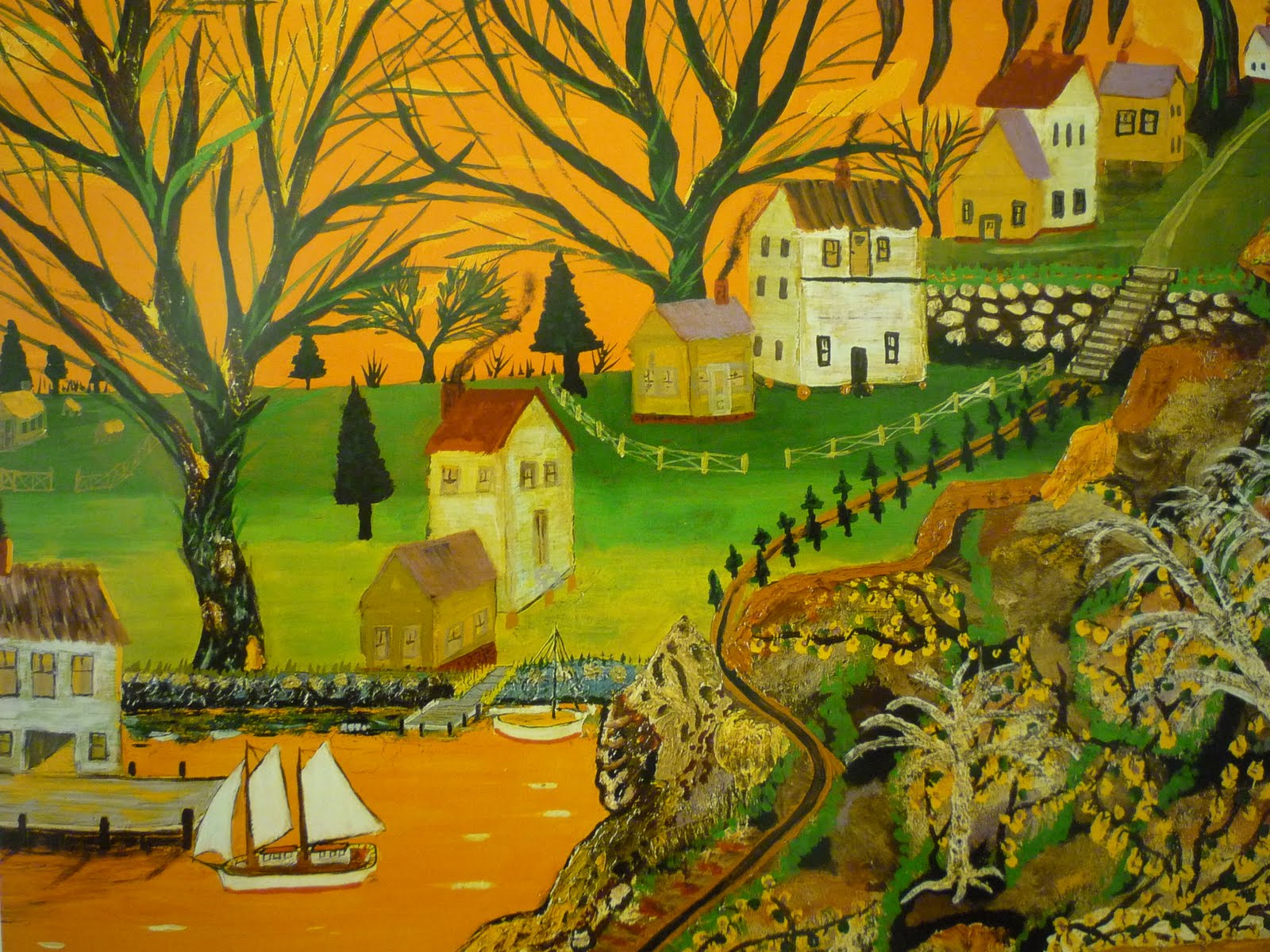
NewEngland Autumn, 1928 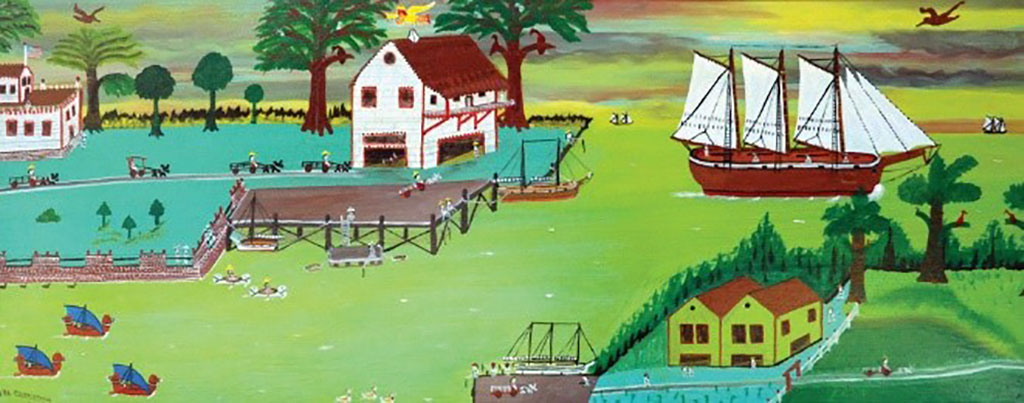
Gabriel Overlooking Booth Bay Harbor, 1960
He used broad, flat space and vivid color to create imaginary landscapes filled with unexpected and unlikely things. He took liberties with perspective. Space is shortened, as the foreground and middle ground stack atop one another. Notable are the inaccurate proportions in many paintings — like medieval artists, he proposed that the more important the object, the larger it should appear, regardless of its place in the landscape.
In 1969, art collector Marilyn Mennello noticed several Cunningham paintings in the window of his shop, and, after a great deal of persuading he eventually consented to sell her one, View From the Widow’s Walk. She acquired a few others during his lifetime and hundreds more after he committed suicide in 1977. Cunningham’s dream was fulfilled when the Mennello Museum of American Art opened in 1998.
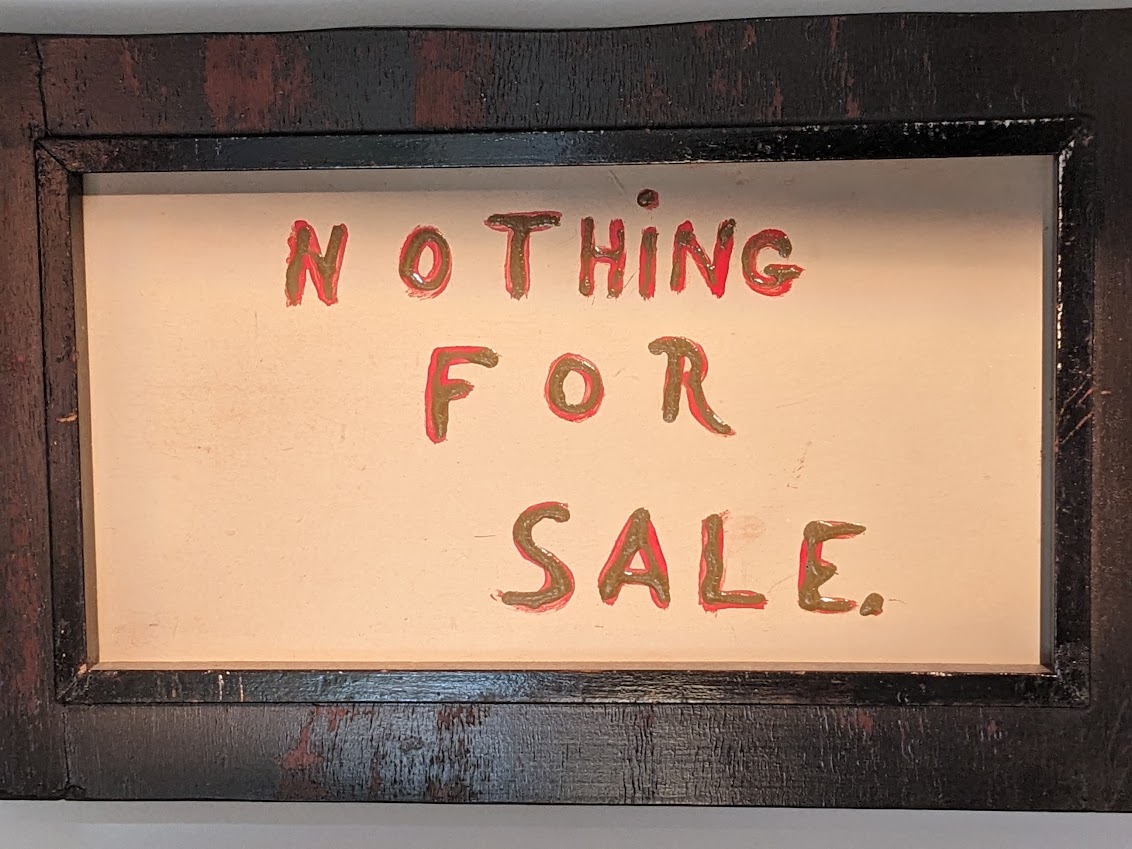
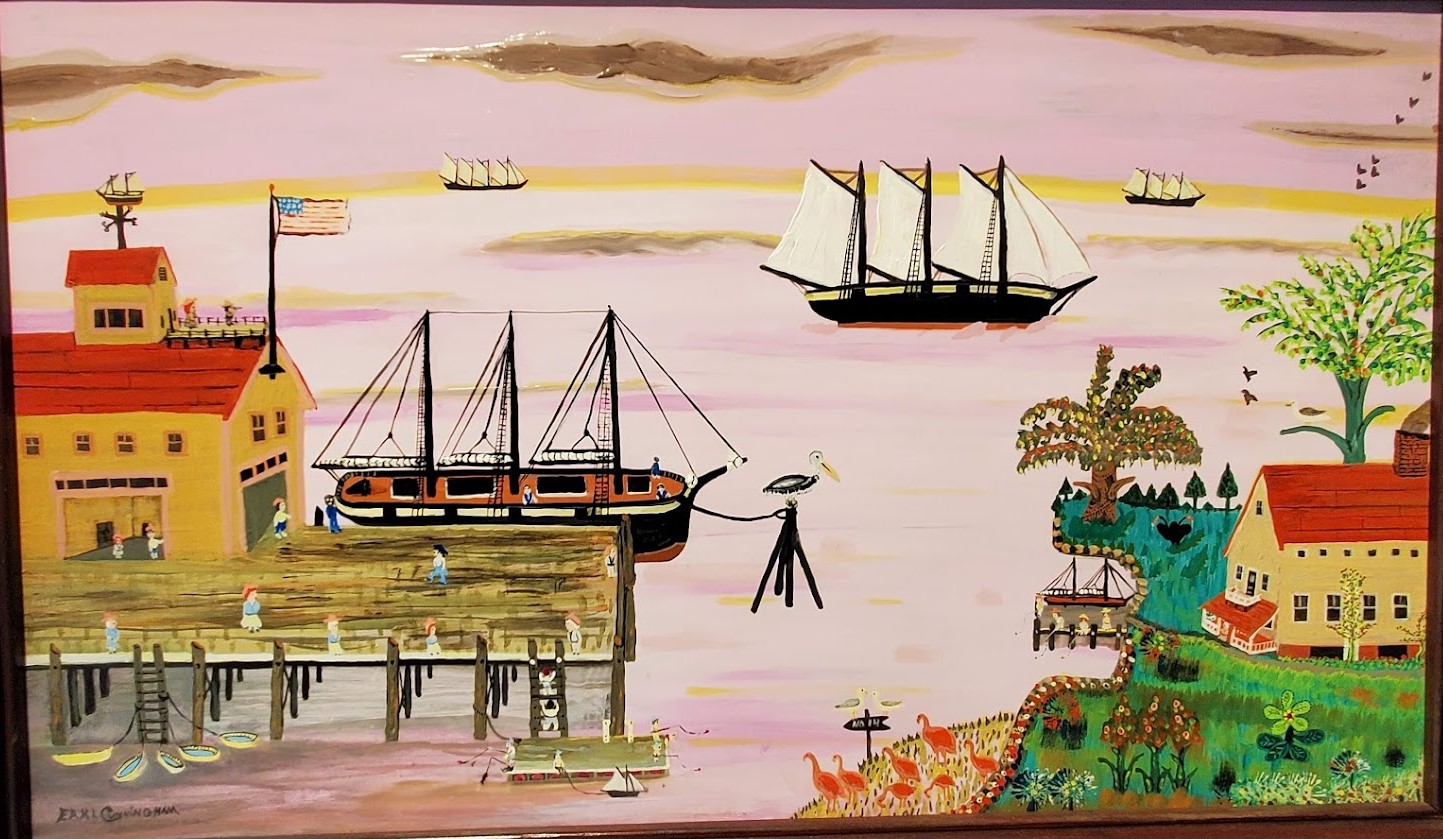
View From the Widow’s Walk, c.1955
The childlike simplicity of Cunningham’s naïve art has an uncanny appeal. While they have the sweetness of nostalgia, some are stinging statements against progress. Throughout a lifetime of painting, his style never changed, never referenced artistic conventions of proportion and perspective. Note the similarities between Town on Pleasant Point Bay, and Stony Cliffs Series (11), painted 30 years apart. But the creative expression and the abundance of detail make Earl Cunningham’s anomalous paintings utterly captivating!
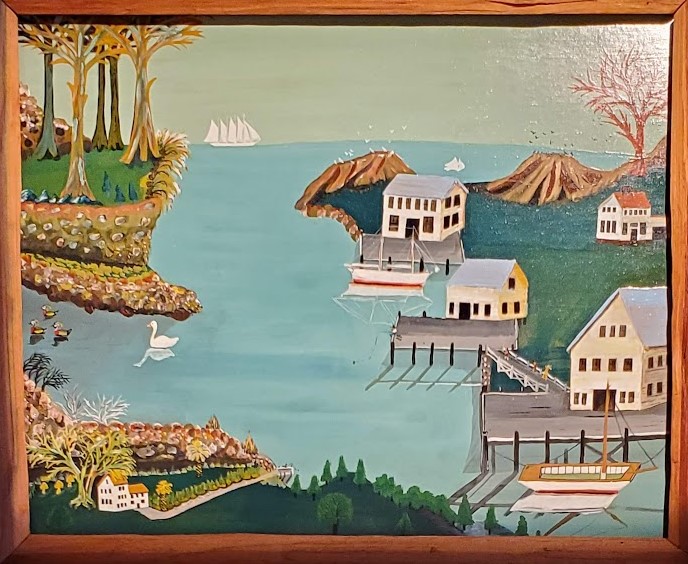
Town on Pleasant Point Bay, c.1930 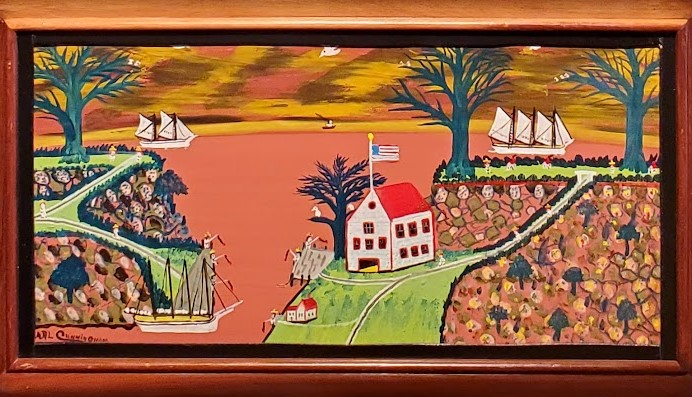
Stony Cliffs Series (11), c.1960
Hmmm … maybe it’s time to plan a little trip …
Mennello Museum of American Art
900 East Princeton Street, Orlando, FL
407-246-4278
Read our blog review of the Mennello Museum here.
Credit for the featured headline image: Earl Cunningham (1893-1977), Seminole Village Deep in the Everglades, c. 1965, Oil on fiberboard. Mennello Museum of American Art.
Art Things Considered is an art and travel blog for art geeks, brought to you by ArtGeek.art — the only search engine that makes it easy to discover almost 1700 art museums, historic houses & artist studios, and sculpture & botanical gardens across the US.
Just go to ArtGeek.art and enter the name of a city or state to see a complete interactive catalog of museums in the area. All in one place: descriptions, locations and links.
Use ArtGeek to plan trips and to discover hidden gem museums wherever you are or wherever you go in the US. It’s free, it’s easy to use, and it’s fun!
© Arts Advantage Publishing, 2023
